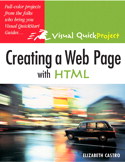Wired News: It’s Just the ‘internet’ Now is Wired News’ concession, finally, that there is no reason to capitalize internet, web, and net. Big news for web design instructors and English instructors alike, since the Wired News Style Guide has been the source of our capitalization woes for years.
Computer Buying
If you read this blog much, you know I have a tendency to lean toward Apple Computers. Have you seen the way-cool new iMac? Take a look at Apple – iMac G5
But, of course, we all know that Windows runs the world, and I was in Best Buy this week shopping for a Windows machine. The salesman informed me that an inexpensive machine with a 32 bit processor was a waste of money, because in a few months Microsoft is going to come out with Longhorn, which will only run with 64 bit processing. He urged the purchase of a 64 bit processer power box that was several hundred dollars more. When checking on this claim later, I discovered that Longhorn runs on either a 32 bit or a 64 bit machine. Be warned.
Review: Creating a Web Page with HTML
 Peachpit Press has a new series called Visual QuickProject. Creating a Web Page with HTML by Elizabeth Castro is the first of the series I’ve seen. If the books are all this good, Peachpit Press has another hit series going.
Peachpit Press has a new series called Visual QuickProject. Creating a Web Page with HTML by Elizabeth Castro is the first of the series I’ve seen. If the books are all this good, Peachpit Press has another hit series going.
This book, including all the appendices, is only 125 pages long. It is just two chapters in length, with full-color visuals that do a lot of the work of getting the message across. It would be an excellent book for a short class in a situation such as continuing education or a summer seminar or a training session of brief duration. While it is pared down to the minimum, it is also surprisingly complete, with good use of CSS and clever ways to pack in essential information. It even shows readers how to use basic image editing techniques and how to FTP. Quite an accomplishment in 125 pages.
The Project in this Visual QuickProject is to make two complete web pages with stylesheets linked to each one. Readers end up with two layouts that could be expanded and adapted for further use, and a good idea of what HTML and CSS are all about. If you are looking for something effective for a short class, this might be exactly the book for you.
The Problem with Floating Divs
Each Tuesday, cartoonist and author Chris Flick has a web design related cartoon at Community MX. This one, The Problem with Floating Divs, is particularly funny.
If you aren’t familiar with Community MX, it is packed with all sorts of info on Macromedia MX 2004 Studio – some of the content is by subscription and some is free.
Review: Web Standards Solutions: The Markup and Style Handbook
 Dan Cederholm of simplebits.com wrote Web Standards Solutions: The Markup and Style Handbook. It is published by Friends of Ed (2004).
Dan Cederholm of simplebits.com wrote Web Standards Solutions: The Markup and Style Handbook. It is published by Friends of Ed (2004).
The book grew out of Cederholm’s practice of asking his simplebits.com users to offer ideas on markup by asking questions such as, “What is the best way to markup such-and-such a page element with XHTML?” The responses were interesting and so is the book, which explores standards-based structural markup and CSS in a way that is fast and easy reading and provides very useful content.
Cederholm covers topics such as markup for lists, headings, tables, forms, and anchors. He looks at CSS for all those elements, plus print styles, CSS layouts, image replacement techniques, and body styles. He examines possible ways to do all these things and brings you gently to understand the way that best uses standards and semantic markup to accomplish the job.
Although this is not a book for beginners, students with basic knowledge of XHTML and CSS will like this book. It is quick to use, provides good examples and resources, and is written in an engaging and light-hearted style that is fun to read. Definitely recommended.
New York and a web site accessibility law
Spitzer Agreement to Make Web Sites Accessible to the Blind and Visually Impaired The NY Attorney General opined that the Americans With Disabilities Act requires that private web sites be accessible to blind and visually impaired Internet users. The ADA generally dictates that all “places of public accommodation” and all “goods, services, facilities, privileges, advantages, or accommodations” of places of public accommodation, must be made accessible to disabled citizens, absent undue hardship.
This is a change from the attitude in the past, which was that only government sponsored web sites had to comply with ADA requirements. While it only applies to New York, it may spread to other states as well as time passes.
Floating Tips
Zoe Gillenwater has an excellent article,
Curing Float Drops and Wraps, at the Nemesis Project. “Floats are a great way to create layouts with multiple columns: they allow blocks to be taken out of the normal flow, where they would just be stacked top to bottom, and positioned beside each other instead. Unfortunately, however, you’ll occasionally run into a situation where one block drops down below the other one instead of sitting side-by-side as you anticipated. This is commonly referred to as a float drop.”